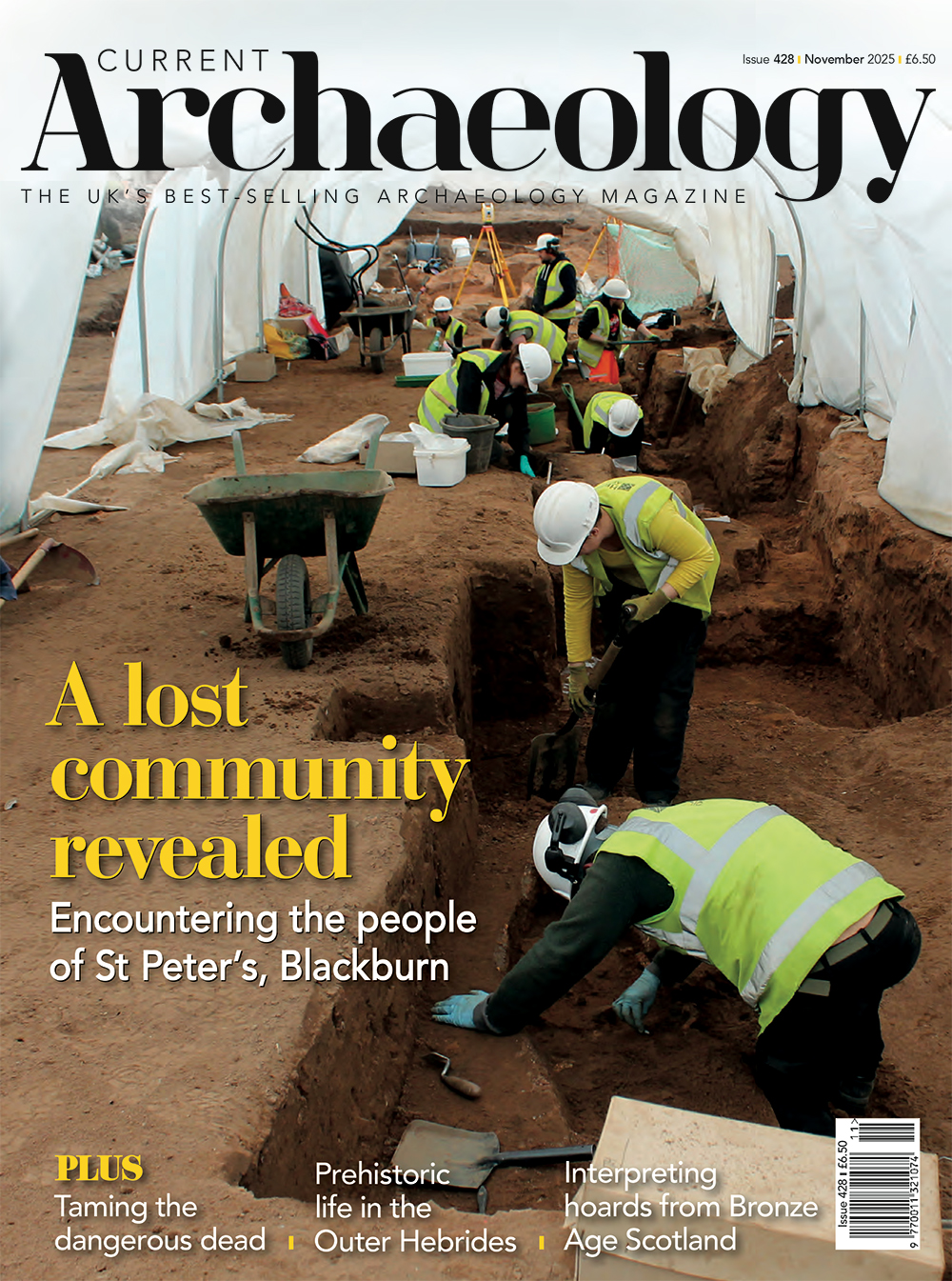You might notice that our first three features all begin with a photograph of a burial. Spanning c.3,000 years and hundreds of miles, together they highlight the diverse ways in which past populations have interacted with the dead, and what these practices can tell us about the living.
This month’s cover feature takes us to Blackburn in Lancashire, where one of the largest cemetery excavations of its kind outside London has recovered the remains of almost 2,000 men, women, and children who were laid to rest beside St Peter’s Church in the 19th century. Despite the scale of these investigations, subsequent analysis and historical research tell a strikingly intimate story, speaking of family relationships, community aspirations, and intriguing local burial traditions.
We also visit Cladh Hallan in the Outer Hebrides: a Bronze Age and Iron Age site where farmland evolved into a cemetery and then a settlement. The dead, too, were transformed over time, with later generations revisiting and rearranging their remains, and building houses over them.
While the people of Cladh Hallan were clearly comfortable with living alongside the dead, however, our third feature tells a contrasting tale, examining historical efforts to keep the deceased in their graves, from Roman ‘deviant’ burials to 18th-century ‘vampire-killings’.
A rather different kind of burial comes next, as we tease apart the contents of two unusual Bronze Age hoards, found 150 miles apart in Scotland.
Finally, the past and present collide as we highlight ways in which experimental archaeology can help to bring even very distant worlds into sharper focus.

